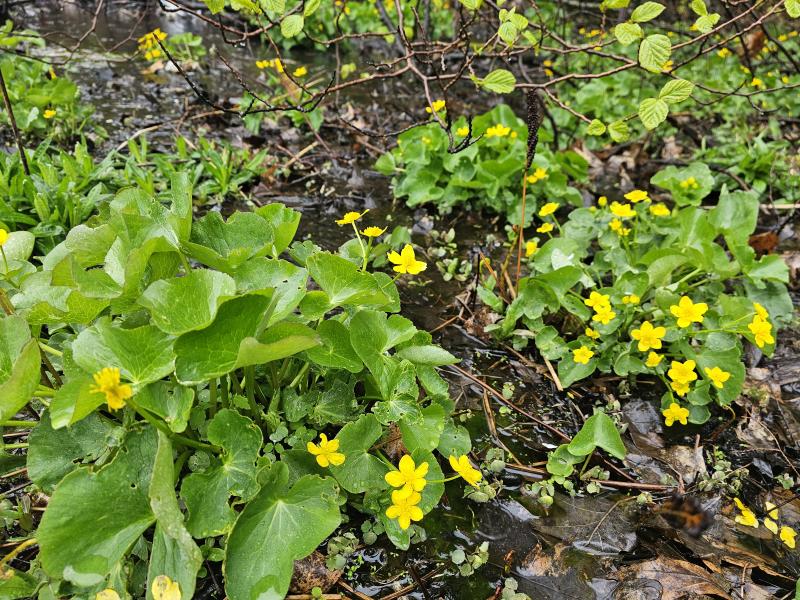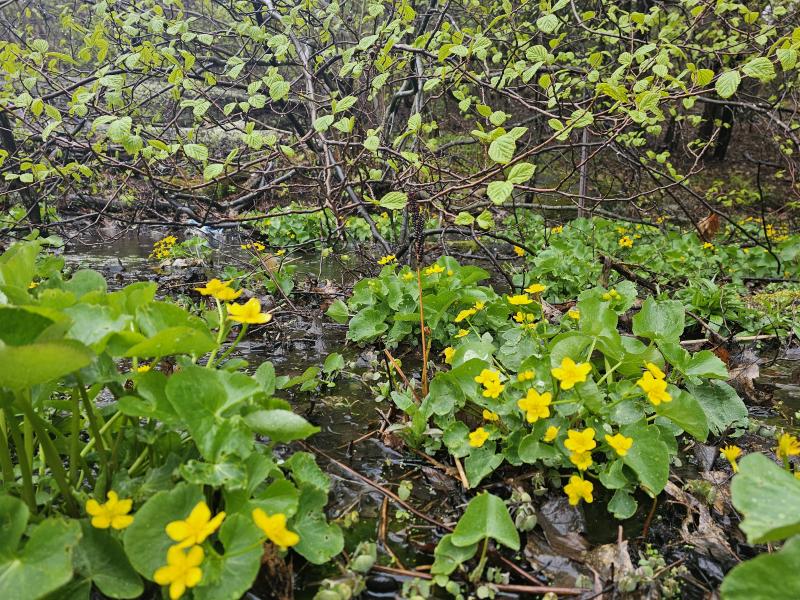
Names and Their Meanings
Marsh Marigold - Caltha palustris L.
Marsh Marigold
Description
Marsh marigold or cowslips has a long, consistent use as a spring cleansing food among Haudenosaunee and Anishinaabe. Frederick Wilkerson Waugh noted from his interviews at the turn of the 20th Century that this spring ephemeral green is a source of food, with the instructions to boil the leaves twice before the plant flowers, and serve as a boiled vegetable with butter and salt. Over a Century later, people from Onondaga to Six Nations of the Grand River, and throughout Anishinaabe communities are using these spring greens in the same way, as a nutritious spring green. Other notes include that one may have to boil more than once, refreshing the water in between, to get out toxicity, and that this plant has also served as a famine food.
Conservation Status
S5 (Secure) in Ontario, Québec and New York


